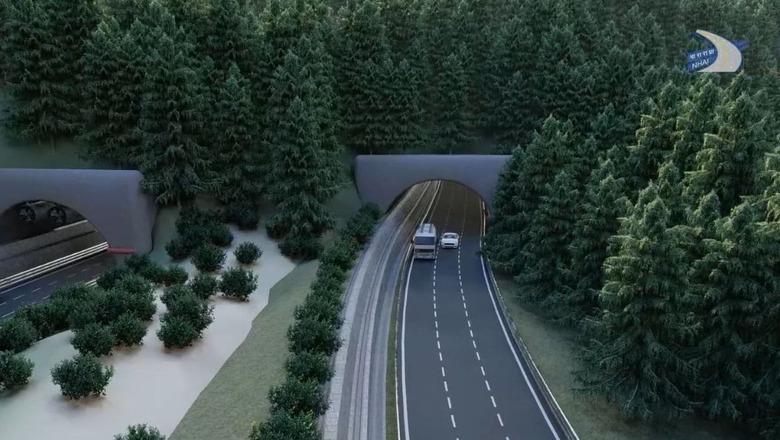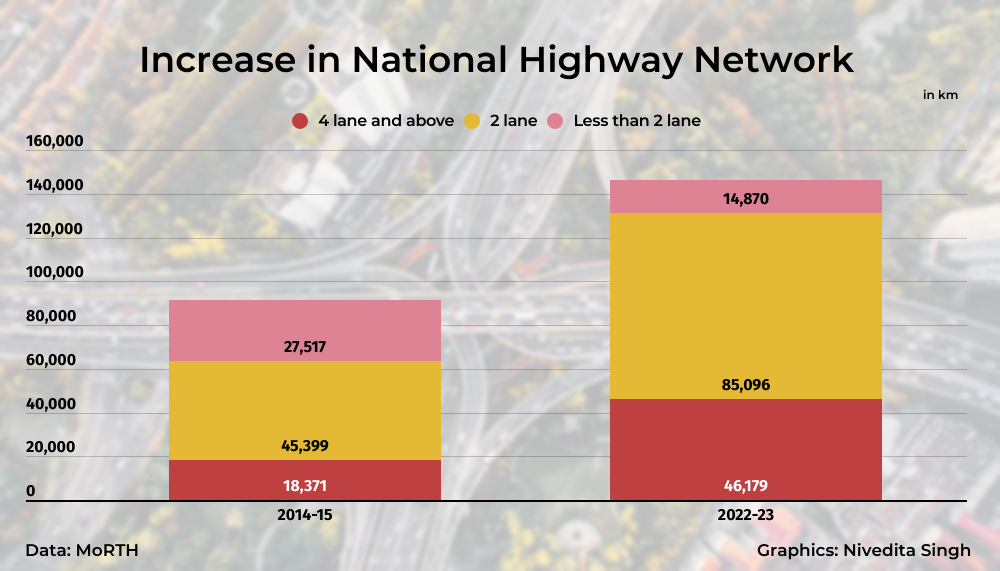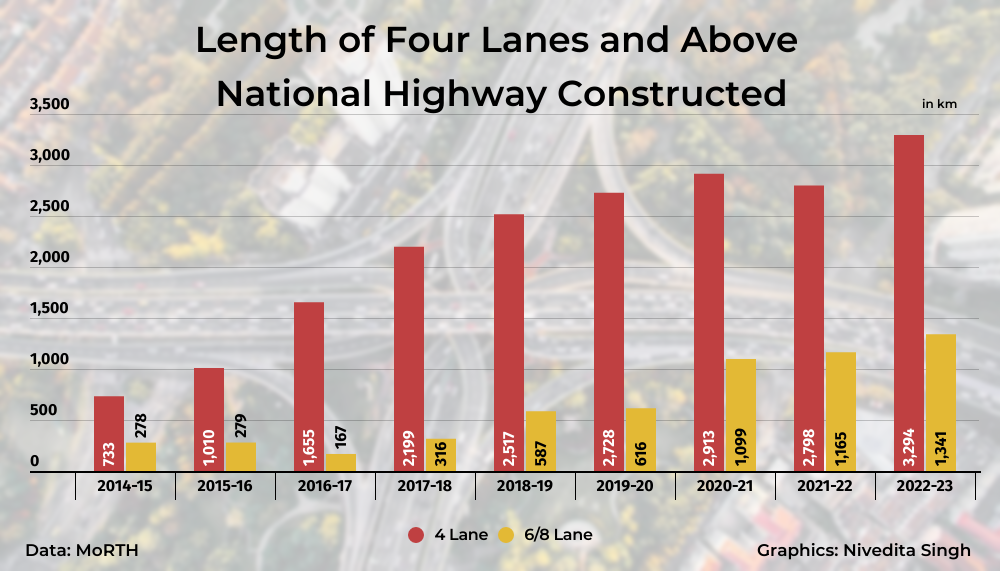
views
Roads are no longer just for point-to-point connectivity in India but also open ways for economic perspective in a region. They are a preferred mode of travel now because of the freedom they offer to the common man.
The ministry of road transport and highways (MoRTH) is building several roads across the country that have the potential to challenge rail and air connectivity.
But apart from easing the journey for the common man, the ministry also has an important challenge – optimising the efficiency of the movement of goods across India.
The ministry has taken a number of steps to overcome the challenges before it. First was the “multi-laning” of the national highways.
Until a few years ago, national highways could be roads with one or two lanes but that is no longer the case. Since 2014, the length of national highways with four lanes or more has increased by more than 2.5 times. In 2014, the length of the four-lane and above highways was 18,387 km. As of November 2023, the figure is 46,179 km.
In 2014, the total length of national highways was 91,287 km and only 20 per cent of this was four-lane or above, while 80 per cent was two-lane or less. At least 50 per cent of this length, around 45,500 km, was two-laned, and another 30 per cent, over 27,500 km, was less than two-laned.


“But now when we say we are building national highways, it means a minimum of four lanes. Only certain regions will get two-lane national highways in the current times,” a ministry official said while speaking to News18.
Officials explained that as of November 2023, the total length of national highways in India was 1.46 lakh km. The length of single-lane highways has dropped from 27,500 to 14,870 km – just 10 per cent of the total. On the other hand, the length of national highways with four lanes and more has risen to 32 per cent (46,179 km).
Another critical step that the ministry has taken is focusing on high-speed corridors – an access-controlled highway for high-speed traffic.
The official quoted above said that in 2014, the length of high-speed corridors in the country was just 353 km. As of 2023, it had increased by 11 times to 3,913 km. By 2030, the ministry aims to expand this length to 15,000 km.
“Project implementation has already been started on 21 greenfield access-controlled corridors including expressways,” the official added.
Explaining further, the official said that MoRTH has completed various flagship projects, which are high-speed corridors, including two sections of the Delhi-Mumbai Expressway – Delhi-Dausa-Lalsot (229 km) and the entire section in Madhya Pradesh (210 km).
The other functional high-speed corridors are Amritsar-Bhatinda-Jamnagar, Suryapet-Khammam, and Indore-Hyderabad.

Overall, the pace of national highway construction in India has also improved drastically over the years.
From 12.1 km per day on average in 2014-15, the ministry was building 28.3 km of national highway per day in 2022-23. The pace of national highway building peaked in 2020-21 when MoRTH constructed 36.5 km per day on average.




















Comments
0 comment